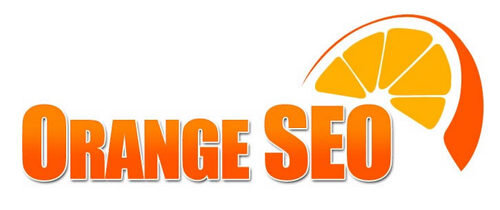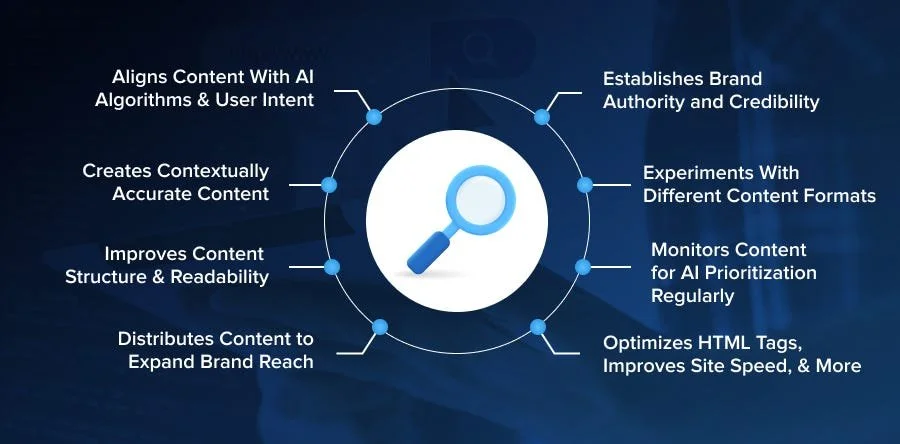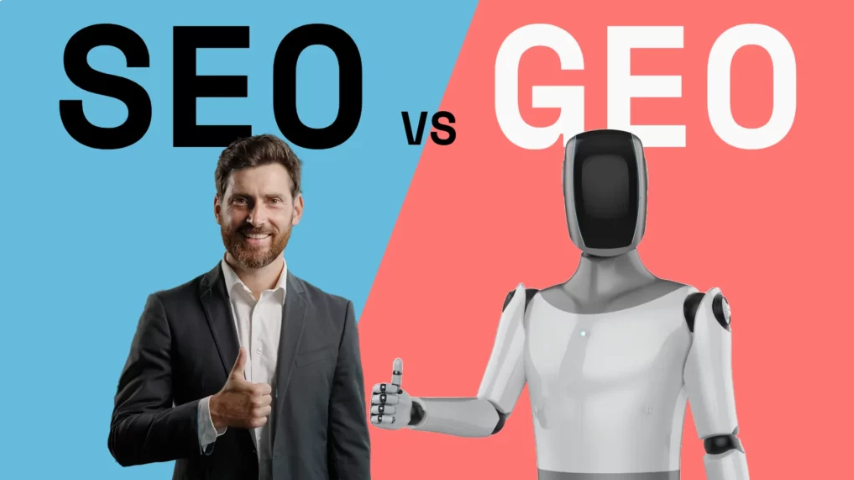Search is no longer just “10 blue links.” People increasingly get answers from AI systems—Google’s AI Overviews, Perplexity, Copilot, and others—that summarize the web and cite a handful of sources. Generative Engine Optimization (GEO) is the discipline of making your brand the best possible source for those AI answers. It builds on SEO but emphasizes topical authority, clarity, structured evidence, authorship, and feedback loops that help AI systems trust and select your content. Ignoring GEO risks losing visibility as answer engines expand. Embracing it puts your expertise in front of customers even when clicks shrink.
What is GEO?
Generative Engine Optimization (GEO) is the practice of optimizing your content so generative engines—LLM-powered systems that synthesize answers—select, summarize, and cite it in their responses. Think Google’s AI Overviews, Perplexity, ChatGPT/Copilot with web browsing, and emerging “AI Mode” interfaces. GEO doesn’t replace SEO; it extends it to a world where the “result” is often an AI-composed answer with source links instead of a traditional results page. [1][2][3]
If SEO historically maximized rank and click-through, GEO maximizes answer inclusion, citation, and assisted outcomes (brand exposure, assisted conversions, branded search lift, and downstream clicks).
Why GEO matters now
Google’s AI Overviews (AIO) display AI-generated snapshots with links “to dig deeper,” and appear when Google believes an overview adds value beyond ordinary results. That’s Google’s stated product intent. [4][5]
Multiple studies show AIO visibility is meaningful and rising. SE Ranking observed AIO occurrence around 18.8% of U.S. queries in late 2024 (with big variance by vertical) [6], and Semrush reported 13.1% of all queries triggering AIO in March 2025, up from 6.5% in January 2025; their live sensor and follow-on analyses often place AIO/AI Mode presence near the ~15% mark. [7][8]
These experiences change user behavior. Industry reporting and data analyses point to more zero-click answers and traffic redistribution—with some publishers/verticals seeing material declines in search referrals as users get answers without clicking. (Estimates range widely by niche and methodology; several outlets cite drops from 20–40%+ for certain categories.) [9][10][11]
At the same time, AI-native engines are growing. Perplexity’s usage surged in 2025 (tens of millions of MAUs and hundreds of millions of monthly queries, per multiple sources). [12][13][14]
Analytics vendors now expose “AI chatbot” referral as a distinct channel, signaling a durable shift in how discovery happens. [15]
Bottom line: Even if your classic rankings look stable, visibility inside AI answers is becoming a second, parallel battle. GEO is how you compete there.
How generative engines choose sources (in plain language)
While each system is proprietary, several principles are consistent:
Topical authority & trust signals. Google’s guidance emphasizes helpful, reliable, people-first content and the E-E-A-T framework (Experience, Expertise, Authoritativeness, Trust). These aren’t a single “ranking factor,” but they orient systems (and human raters) toward trustworthy sources—especially on YMYL topics. [16][17][18]
Clear answers to explicit questions. AI Overviews exist to help people grasp complex topics quickly, then link to diverse sites for deeper reading. Content that anticipates questions, states concise answers, and supports them with detail is easier to quote and cite. [5]
Structure and machine readability. Marked-up entities, clean headings, lists, and cited data help models extract the “gist” accurately. (Schema isn’t a magical switch for AIO inclusion, but structure aids machine understanding.) [5][16]
Consistency across the web. Engines triangulate who you are—authorship, organization details, bylines, reviews, and mentions—and prefer consistent signals that reinforce legitimacy. [17][18]
Freshness and coverage. Several studies show the length/shape of AI Overviews evolve over time, and they tend to trigger for informational queries; regularly updated, comprehensive content fares better. [6][7][19]
GEO vs. SEO (and where they overlap)
Overlap: intent research, crawlability, on-page clarity, links, internal architecture, structured data, and content quality all still matter. [16][17]
Different emphasis: GEO pushes you to answer clusters of questions, present concise quotable sections, attribute sources/data, and show your credentials. It also asks you to measure new things: answer presence, citations, and AI referrals, not just rankings.
A practical GEO playbook
1) Map questions, not just keywords
Start with your highest-value topics and build a question graph: “What is…?”, “How to…?”, “vs.” comparisons, pricing, implementation steps, troubleshooting, evaluation criteria, pitfalls, timelines, and ROI. Supporting adjacent questions on the same pillar page increases the odds an AI can answer from your one resource.
2) Design for quotability
For each heading, lead with a 2–4 sentence answer (or a tight checklist) that stands on its own. Then expand with detail, examples, and visuals. This structure gives engines something clean to lift into summaries. [5]
3) Strengthen E-E-A-T in visible ways
Bylines with bios (expertise + experience)
Methodology sections for original data
Citations to high-quality sources
Organization details (address, contacts, policies)
Author/organization schema
These align with Google’s people-first guidance and quality-rater framing. [16][17][18]
4) Make it machine friendly
Descriptive H1/H2s, scannable lists, and consistent terminology
Standard units, definitions, and explicit numbers (models love facts)
Alt text that names the thing (not keyword stuffing)
Internal links that reinforce topical clusters
Where appropriate, add structured data that clarifies entities/relationships
5) Publish original insight, not just summaries
Engines aim to synthesize; they still need sources worth citing. Commission small studies, run benchmarks, share anonymized cohort analyses, document experiments, or publish calculators and checklists. Distinctive value = higher chance of citation.
6) Keep pages fresh
AI Overviews’ prevalence and length have shifted across 2024–2025; keep important pages updated with new data points and clarifications so they remain the best snapshot for an answer. [6][7][19]
7) Measure what matters in a GEO world
Answer presence & citation share for priority queries (manual checks + rank-tracking modules that simulate AIO/AI Mode) [7][8]
AI referral traffic (Perplexity/ChatGPT/Copilot) via tools that label “AI Chatbot” sources [15]
Assisted outcomes: branded search lift, direct visits after exposure, newsletter sign-ups, demo requests
Content health: freshness cadence, question coverage, E-E-A-T signals per page
8) Diversify discovery beyond classic SERPs
Traffic composition is changing. As zero-click behaviors rise and AI engines grow, spread your expertise to channels that LLMs crawl and cite (docs, research, GitHub, reputable blogs, YouTube transcripts). [9][12][13][14]
What about paid search & AI Overviews?
Semrush’s large-scale study found that AIO and ads co-appear on only a small share of SERPs, and overlap between AIO links and ad URLs is rare. Translation: winning AIO inclusion does not inherently cannibalize your ads—and vice versa. Plan holistically but measure channels separately. [20]
Risks, realities, and how to respond
Zero-click & uneven impact. Some categories and publishers report material organic declines post-AIO; others see stable or even increased exposure. Expect variance by niche and monitor your query set. [9][10][11]
Attribution blind spots. If users get answers without clicking—or click from AI surfaces—your analytics need to track AI referrals and assisted value, not just last-click. [15]
Quality and accuracy. AI answers can be wrong or omit nuance. Publishing clear, sourced, up-to-date content increases your chance to be the corrective source engines choose. [16][17]
Conclusion
Search is shifting from lists of links to synthesized answers. That doesn’t make SEO obsolete—it raises the bar. Generative Engine Optimization (GEO) extends what already works (intent, clarity, crawlability) with what answer engines need to trust and cite your pages: concise, quotable sections; visible E-E-A-T; structured evidence; and ongoing measurement. Teams that adapt fastest will earn presence inside AI Overviews and answer engines—even when clicks are scarce—while building brand authority that compounds across channels.
If you do nothing else, do this: pick a handful of revenue-critical queries, make one pillar page the single best, most up-to-date answer on the internet, wire up measurement for AIO/AI-referral visibility, and publish one original asset that others will reference. Then iterate. GEO isn’t a one-off project—it’s a new operating habit that keeps your expertise at the center of how people (and machines) discover and evaluate solutions.
Your quick exit checklist
Turn 10–20 “money” queries into a question map.
Add 2–4 sentence answer boxes; expand gaps with data and examples.
Strengthen E-E-A-T (bylines, bios, org details, methods, citations).
Standardize structure (H2/H3s, lists, definitions, internal links, schema).
Track AIO/AI-mode presence and AI-referral traffic weekly.
Ship one original study/tool; refresh monthly based on what gets quoted.
Do this well, and GEO becomes a durable edge—protecting visibility today and compounding authority for what comes next.
Why GEO Is the Marketer’s New Survival Skill Video:
Sources
[1] Search Engine Land – “What is generative engine optimization (GEO)?” (definition and scope). Search Engine Land
[2] Foundation Inc. – “What’s Generative Engine Optimization (GEO) & How To Do It.” Foundation Marketing
[3] arXiv – “GEO: Generative Engine Optimization” (research framing). arXiv
[4] Google Support – “Find information faster with AI Overviews in Google Search.” Google Help
[5] Google Search Central – “AI features and your website” (how AIO intends to surface diverse links). Google for Developers
[6] SE Ranking – “AI Overviews 2024 recap & 2025 outlook” (prevalence by niche, text length). SE Ranking
[7] Semrush – “Semrush Report: AI Overviews’ impact on search in 2025” (AIO trigger rates Jan–Mar 2025). Semrush
[8] Semrush – “AI Mode comparison study” (AIO/AI Mode ~15% and overlap patterns). Semrush
[9] WordStream – “AI Overviews are impacting SEO” (behavioral/traffic implications). WordStream
[10] WordStream – “34 AI Overviews Stats & Facts [2025]” (reported traffic declines for some sites). WordStream
[11] Wall Street Journal – “News Sites Are Getting Crushed by Google’s New AI Tools.” The Wall Street Journal
[12] Exploding Topics – “Perplexity AI Stats (2025)” (users/requests). Exploding Topics
[13] Index.dev – “50+ Perplexity AI Stats (2025).” Index
[14] DemandSage – “Perplexity AI statistics (2025).” DemandSage
[15] Similarweb – “AI Chatbot Traffic” source announcement (tracking AI referrals). Similarweb Ltd.
[16] Google – “Creating Helpful, Reliable, People-First Content.” Google for Developers
[17] Google – “Search Essentials” + E-E-A-T update (quality-rater framing). Google for Developers+1
[18] Search Engine Journal – “Google E-E-A-T: What It Is & How To Demonstrate It.” Search Engine Journal
[19] SE Ranking – “AIO state-by-state & length trend (2024→2025).” SE Ranking
[20] Semrush – “We studied 200,000 AI Overviews” (AIO + ads co-appearance and overlap details). Semrush




